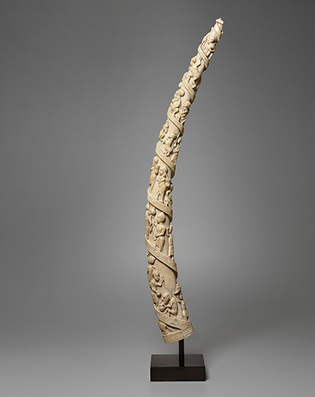 loading
loading
The farewell tour Yale University Art GalleryView full imageUnidentified Vili artist, Republic of the Congo; Democratic Republic of the Congo; or Angola, Loango Coast This African ivory elephant tusk and others have been carved into processions of people and animals ascending. I love viewing them. You know, the tusk itself is an absolutely gorgeous and elegant form, coming right out of nature. I can’t say that I understand the iconography of all of them, but in some interesting ways they remind me of Trajan’s Column in Rome, with its narrative spiral of Roman history. And this is how ivory was carved in these African cultures before the continent was ever explored by foreigners, and before ivory was used in the way it is now in Asian and European cultures. So we’re very fortunate to have some of the early examples of these amazingly carved tusks. Now it’s very difficult to purchase anything that’s been made in ivory. To preserve endangered species, ivory can’t be sold and traded on the markets. In a funny way, this fact is now benefitting museums; more objects containing ivory are being gifted to museums, because of the commercial restrictions currently in place.
|
|